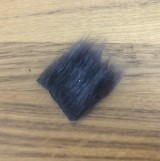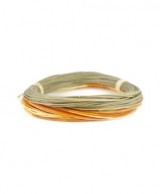How is used
 The creation of a realistic flies by using our products starts by creating the wings and/or pockets of the flies wings, using the Burners and the drawn part of the correspondent Wing; once cut the excess part of the Wing sheet, the two parts making up the common Wing are joined by thermal fusion of the two sheets, from among which one with printed realistic wings and another neutral one.
The creation of a realistic flies by using our products starts by creating the wings and/or pockets of the flies wings, using the Burners and the drawn part of the correspondent Wing; once cut the excess part of the Wing sheet, the two parts making up the common Wing are joined by thermal fusion of the two sheets, from among which one with printed realistic wings and another neutral one.
In order to facilitate the coupling of wing sheets, we ordered the cutting of the unique wings and of the neutral sheet, so as to be left joint; once folded into two parts is avoided the movement of the two parts during the stage of cutting on the outer contour. In order to improve the tightness of the two sheets can be used any office marker or glue (by covering the part remaining outside the wing model), joining the two parts of the wing, so that they should not move during the period of manufacturing operations. By using the model N (neutral) Markers, coloring the neutral side of the sheet, and Wings can be given the desired hue for wings and wing pockets, according to the preferences.
Another significant and very useful issue are the wing codes that are found printed on the lower part thereof. By joining the two sheets with the written legible part to the inside is avoided the confusion related to which is the right side and which is the left side. Furthermore, in this way the printed part remains protected inside the wing and it will last longer.
The preparation of the Wings and Wing Pockets is performed by folding and gluing the drawn parts and the neutral part of the Wing (they can be blocked among them by using a marker, by its passing in the part where the code is printed) and by leaning it against a smooth surface, by using a cutting device, one proceeds to cut the Wings on the outer contour, following the contour of the wings and taking care to leave approximately 0.5/1 mm to the outside. Once obtained the wings from the initial sheet, position them in the Burners, observing the same size corresponding to the cut wing and using a heat source (firelighter or match), swiftly pass the flame over the outer contour of the Burner in order to glue the outer edge of the wing. Once this operation is complete, pull the shaped wing out of the tweezers and eventually give the wing a shape more suitable for use in the construction of the artificial fly.
Once the wing is finished and the two sheets thereof are made up, one should proceed to heat it along the outer part by using the Burner, so that such should be joined by melting the plastic. By this system, between the two layers of the wing shall remain a vacuum that shall increase the floating capacity of the artificial fly.
The second stage refers to the accomplishment of the Extended Body of the Realistic Flies by using the GVS EBP kit; considering both the size of the bug to be imitated and the thickness of the GVS Foam and using a foam band and PT Dyneema, one shall proceed to accomplish the body that shall be then assembled on the corresponding Hook.
Afterwards, the steps to accomplish the Bug are very similar to the traditional sequences. You can find on the page with videos varied stages of making and assembling the Bug; furthermore to the Fly Tying page, you will find even Technical Sheets with varied proportions and sizes to be able to obtain Realistic Flies.
The wings and other materials that are part of the GVS Tying System have the profile, the colour and structure very realistic and similar to the real Flies. Concurrently it takes more time both to create the artificial parts used on the surface and the artificial parts sank in water.












